Chrysler 2010 Annual Report Download - page 158
Download and view the complete annual report
Please find page 158 of the 2010 Chrysler annual report below. You can navigate through the pages in the report by either clicking on the pages listed below, or by using the keyword search tool below to find specific information within the annual report.-
 1
1 -
 2
2 -
 3
3 -
 4
4 -
 5
5 -
 6
6 -
 7
7 -
 8
8 -
 9
9 -
 10
10 -
 11
11 -
 12
12 -
 13
13 -
 14
14 -
 15
15 -
 16
16 -
 17
17 -
 18
18 -
 19
19 -
 20
20 -
 21
21 -
 22
22 -
 23
23 -
 24
24 -
 25
25 -
 26
26 -
 27
27 -
 28
28 -
 29
29 -
 30
30 -
 31
31 -
 32
32 -
 33
33 -
 34
34 -
 35
35 -
 36
36 -
 37
37 -
 38
38 -
 39
39 -
 40
40 -
 41
41 -
 42
42 -
 43
43 -
 44
44 -
 45
45 -
 46
46 -
 47
47 -
 48
48 -
 49
49 -
 50
50 -
 51
51 -
 52
52 -
 53
53 -
 54
54 -
 55
55 -
 56
56 -
 57
57 -
 58
58 -
 59
59 -
 60
60 -
 61
61 -
 62
62 -
 63
63 -
 64
64 -
 65
65 -
 66
66 -
 67
67 -
 68
68 -
 69
69 -
 70
70 -
 71
71 -
 72
72 -
 73
73 -
 74
74 -
 75
75 -
 76
76 -
 77
77 -
 78
78 -
 79
79 -
 80
80 -
 81
81 -
 82
82 -
 83
83 -
 84
84 -
 85
85 -
 86
86 -
 87
87 -
 88
88 -
 89
89 -
 90
90 -
 91
91 -
 92
92 -
 93
93 -
 94
94 -
 95
95 -
 96
96 -
 97
97 -
 98
98 -
 99
99 -
 100
100 -
 101
101 -
 102
102 -
 103
103 -
 104
104 -
 105
105 -
 106
106 -
 107
107 -
 108
108 -
 109
109 -
 110
110 -
 111
111 -
 112
112 -
 113
113 -
 114
114 -
 115
115 -
 116
116 -
 117
117 -
 118
118 -
 119
119 -
 120
120 -
 121
121 -
 122
122 -
 123
123 -
 124
124 -
 125
125 -
 126
126 -
 127
127 -
 128
128 -
 129
129 -
 130
130 -
 131
131 -
 132
132 -
 133
133 -
 134
134 -
 135
135 -
 136
136 -
 137
137 -
 138
138 -
 139
139 -
 140
140 -
 141
141 -
 142
142 -
 143
143 -
 144
144 -
 145
145 -
 146
146 -
 147
147 -
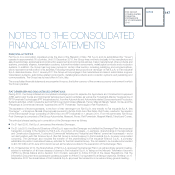 148
148 -
 149
149 -
 150
150 -
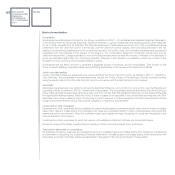 151
151 -
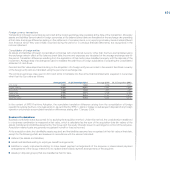 152
152 -
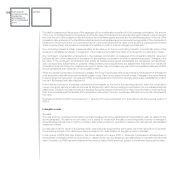 153
153 -
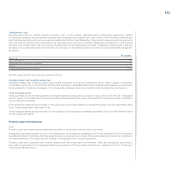 154
154 -
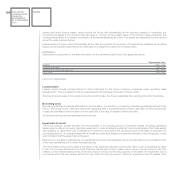 155
155 -
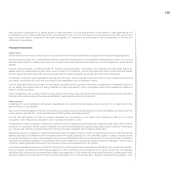 156
156 -
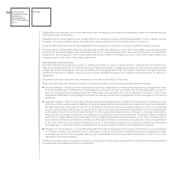 157
157 -
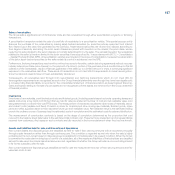 158
158 -
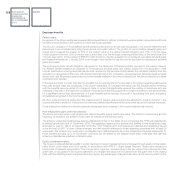 159
159 -
 160
160 -
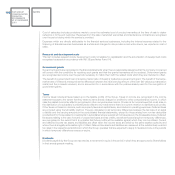 161
161 -
 162
162 -
 163
163 -
 164
164 -
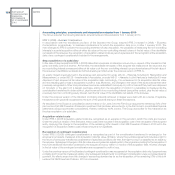 165
165 -
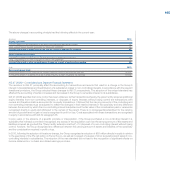 166
166 -
 167
167 -
 168
168 -
 169
169 -
 170
170 -
 171
171 -
 172
172 -
 173
173 -
 174
174 -
 175
175 -
 176
176 -
 177
177 -
 178
178 -
 179
179 -
 180
180 -
 181
181 -
 182
182 -
 183
183 -
 184
184 -
 185
185 -
 186
186 -
 187
187 -
 188
188 -
 189
189 -
 190
190 -
 191
191 -
 192
192 -
 193
193 -
 194
194 -
 195
195 -
 196
196 -
 197
197 -
 198
198 -
 199
199 -
 200
200 -
 201
201 -
 202
202 -
 203
203 -
 204
204 -
 205
205 -
 206
206 -
 207
207 -
 208
208 -
 209
209 -
 210
210 -
 211
211 -
 212
212 -
 213
213 -
 214
214 -
 215
215 -
 216
216 -
 217
217 -
 218
218 -
 219
219 -
 220
220 -
 221
221 -
 222
222 -
 223
223 -
 224
224 -
 225
225 -
 226
226 -
 227
227 -
 228
228 -
 229
229 -
 230
230 -
 231
231 -
 232
232 -
 233
233 -
 234
234 -
 235
235 -
 236
236 -
 237
237 -
 238
238 -
 239
239 -
 240
240 -
 241
241 -
 242
242 -
 243
243 -
 244
244 -
 245
245 -
 246
246 -
 247
247 -
 248
248 -
 249
249 -
 250
250 -
 251
251 -
 252
252 -
 253
253 -
 254
254 -
 255
255 -
 256
256 -
 257
257 -
 258
258 -
 259
259 -
 260
260 -
 261
261 -
 262
262 -
 263
263 -
 264
264 -
 265
265 -
 266
266 -
 267
267 -
 268
268 -
 269
269 -
 270
270 -
 271
271 -
 272
272 -
 273
273 -
 274
274 -
 275
275 -
 276
276 -
 277
277 -
 278
278 -
 279
279 -
 280
280 -
 281
281 -
 282
282 -
 283
283 -
 284
284 -
 285
285 -
 286
286 -
 287
287 -
 288
288 -
 289
289 -
 290
290 -
 291
291 -
 292
292 -
 293
293 -
 294
294 -
 295
295 -
 296
296 -
 297
297 -
 298
298 -
 299
299 -
 300
300 -
 301
301 -
 302
302 -
 303
303 -
 304
304 -
 305
305 -
 306
306 -
 307
307 -
 308
308 -
 309
309 -
 310
310 -
 311
311 -
 312
312 -
 313
313 -
 314
314 -
 315
315 -
 316
316 -
 317
317 -
 318
318 -
 319
319 -
 320
320 -
 321
321 -
 322
322 -
 323
323 -
 324
324 -
 325
325 -
 326
326 -
 327
327 -
 328
328 -
 329
329 -
 330
330 -
 331
331 -
 332
332 -
 333
333 -
 334
334 -
 335
335 -
 336
336 -
 337
337 -
 338
338 -
 339
339 -
 340
340 -
 341
341 -
 342
342 -
 343
343 -
 344
344 -
 345
345 -
 346
346 -
 347
347 -
 348
348 -
 349
349 -
 350
350 -
 351
351 -
 352
352 -
 353
353 -
 354
354 -
 355
355 -
 356
356 -
 357
357 -
 358
358 -
 359
359 -
 360
360 -
 361
361 -
 362
362 -
 363
363 -
 364
364 -
 365
365 -
 366
366 -
 367
367 -
 368
368 -
 369
369 -
 370
370 -
 371
371 -
 372
372 -
 373
373 -
 374
374 -
 375
375 -
 376
376 -
 377
377 -
 378
378 -
 379
379 -
 380
380 -
 381
381 -
 382
382 -
 383
383 -
 384
384 -
 385
385 -
 386
386 -
 387
387 -
 388
388 -
 389
389 -
 390
390 -
 391
391 -
 392
392 -
 393
393 -
 394
394 -
 395
395 -
 396
396 -
 397
397 -
 398
398 -
 399
399 -
 400
400 -
 401
401 -
 402
402
 |
 |

157
Sales of receivables
The Group sells a significant part of its financial, trade and tax receivables through either securitisation programs or factoring
transactions.
A securitisation transaction entails the sale of a portfolio of receivables to a securitisation vehicle. This special purpose entity
finances the purchase of the receivables by issuing asset-backed securities (i.e. securities whose repayment and interest
flow depend upon the cash flow generated by the portfolio). Asset-backed securities are divided into classes according to
their degree of seniority and rating: the most senior classes are placed with investors on the market; the junior class, whose
repayment is subordinated to the senior classes, is normally subscribed for by the seller. The residual interest in the receivables
retained by the seller is therefore limited to the junior securities it has subscribed for. In accordance with SIC 12 – Consolidation
– Special Purpose Entities (SPE), all securitisation vehicles are included in the scope of consolidation, because the subscription
of the junior asset-backed securities by the seller entails its control in substance over the SPE.
Furthermore, factoring transactions may be with or without recourse to the seller; certain factoring agreements without recourse
include deferred purchase price clauses (i.e. the payment of a minority portion of the purchase price is conditional upon the full
collection of the receivables), require a first loss guarantee of the seller up to a limited amount or imply a continuing significant
exposure to the receivables cash flow. These kinds of transactions do not meet IAS 39 requirements for asset derecognition,
since the risks and rewards have not been substantially transferred.
Consequently, all receivables sold through both securitisation and factoring transactions which do not meet IAS 39
derecognition requirements are recognised as such in the Group financial statements even though they have been legally sold;
a corresponding financial liability is recorded in the consolidated statement of financial position as Asset-backed financing.
Gains and losses relating to the sale of such assets are not recognised until the assets are removed from the Group statement
of financial position.
Inventories
Inventories of raw materials, semi finished products and finished goods, (including assets leased out under operating leases and
assets sold under a buy-back commitment that are held for sale) are stated at the lower of cost and net realisable value, cost
being determined on a first in-first-out (FIFO) basis. The measurement of inventories includes the direct costs of materials, labour
and indirect costs (variable and fixed). Provision is made for obsolete and slow-moving raw materials, finished goods, spare
parts and other supplies based on their expected future use and realisable value. Net realisable value is the estimated selling
price in the ordinary course of business less the estimated costs of completion and the estimated costs for sale and distribution.
The measurement of construction contracts is based on the stage of completion determined as the proportion that cost
incurred to the balance sheet date bears to the estimated total contract cost. These items are presented net of progress billings
received from customers. Any losses on such contracts are fully recorded in the income statement when they become known.
Assets and liabilities held for sale and Discontinued Operations
Non-current assets and disposal groups are classified as held for sale if their carrying amounts will be recovered principally
through a sale transaction rather than through continuing use. This condition is regarded as met only when the sale is highly
probable and the non-current asset (or disposal group) is available for immediate sale in its present condition. When the Group
is committed to a sale plan involving loss of control of a subsidiary, all of the assets and liabilities of that subsidiary are classified
as held for sale when the criteria described above are met, regardless of whether the Group will retain a non-controlling interest
in its former subsidiary after the sale.
Non-current assets and disposal groups classified as held for sale are measured at the lower of their carrying amounts and fair
value less costs to sell.
